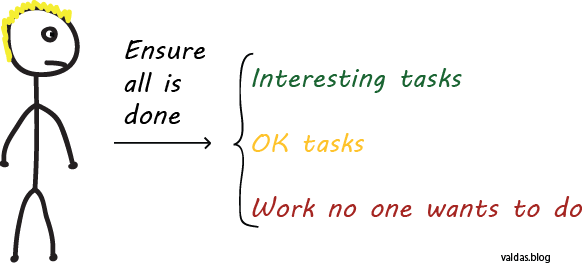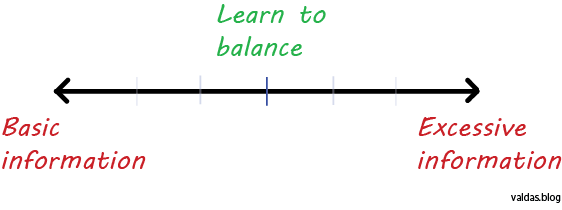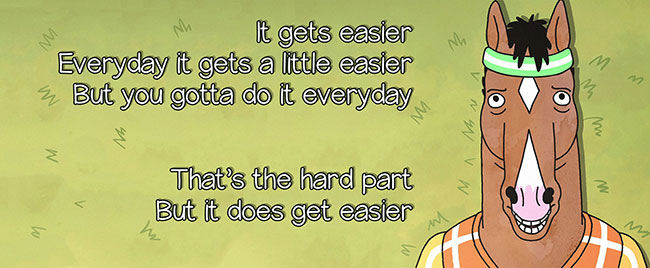Delegating tasks to local team members is already tricky. Delegating tasks to people distributed all over the world opens another Pandora’s box. Leadership courses, coaching exercises or delegation drills give a solid foundation, but once the rubber meets the road, you are on your own.
Over the past few years, I have been responsible for leading a team, setting priorities and making sure we deliver what we promise. Over that period, I have deployed multiple solutions, made many mistakes and learned many great lessons.
One of the leadership aspects that hit me hardest was delegation; no wonder why it is often referenced as “the art of delegation”. In this blog post, I am going to list my three principles of delegation that I follow.
Lesson #1: Understand why a task is important before delegating it
My first delegation attempts were miserable. My team’s backlog was full of various assignments: some were challenging and put a smile on a face; some were tedious and sparked thoughts of quitting the job. As a leader, I had to ensure everything is completed.

For some unexplainable reason, I started framing the tedious tasks as simple. “It’s not as difficult as you think”. Believing that people will be more open to take responsibility for it, making the assignee feel less burdened. However “easy tasks” are not desirable. When a person leaves a company, he never says “I quit, because I didn’t get enough simple tasks”. It might be the other way around - “I quit because I didn’t get chance to work on important and challenging things”. Therefore it was stupid to frame tedious tasks as simple. A more experienced colleague suggested to present all assignments as necessary, and this strategy has worked well for me ever since.

Jacko Willink, in one of his recent podcasts, talks about the importance of explaining WHY, respect, and delegation of tedious tasks, like taking out the trash. Jocko is a former SEAL units leader, trainer, business consultant, book author, podcast host. He uses military and war stories to explain the nuances of leadership. A mistake in business might cause a project failure, lost client, bankruptcy. Even the worst-case scenario in business is far away from the combat mistakes outcome - death.
“Explain why, participate when you can, build relationships with your troops and you’ll be good” - Jocko Willink
To summarize my delegation Lesson #1, I treat a task as delegatable if I can understand the importance and the impact of the assignment. Use Simon Sinek’s preachings and start with explaining the Why.
Lesson #2 Recognize when people refuse to accept ownership
Toastmasters is a nonprofit organization that controls clubs worldwide to help members improve their public speaking and leadership skills. I joined a local Toastmasters club with the primary goal to become more confident public speaker. I was not interested in leadership track because leadership courses seemed to be just a cliché. Soon, I was about to learn the Toastmasters leadership approach.
One time the club president approached me to ask a favor.
“Would you be interested in organizing a team building for our members?”, asked the club president.
“Sure, why not”, wrongly assuming it’s barely a dinner table reservation.
“Great! Listen. We are almost 50 members; we like team buildings that last for 2 days out of the city, with catering, transportation, and engagements for all during both days; fixed budget. You can arrange it alone, or you can ask others for help”, detailed the president.
I was left speechless. I started asking people for help, but I couldn’t get buy-ins. They seemed to agree first, but there was no progress.

A colleague quickly noticed my struggles and suggested to pay more attention to the assignees’ responses, to not take any “YES” for granted. Instead of saying “No”, people might use phrases like “maybe”, “I might take a look”, “I think I could”. I, as an inexperienced leader, took those phrases as an agreement to take ownership. WHAT A NOOBY MISTAKE.
My current strategy of identifying buy-ins requires putting responses on an axis with “NO” on one end, and “YES” on another.

Every time I delegate something I locate the response on the axis. “Maybe”, “I think I could”, inconsistent verbal and non-verbal communication - all maps between “NO” and “YES”. Later I investigate what has to be done from my end to get a total buy-in (YES). Have I provided enough information? Have I chosen the right person for the task? Is there enough time? A while ago I wrote a blog post on saying NO that you might find interesting and relevant.
Coming back to the team building event: it was a success and an accelerated leadership training!
Lesson #3 Continuously improve your explanation skills
Delegating gets trickier when team members are distributed all over the world. In one project, I was responsible for collecting software details from the stakeholders scattered across the globe. I was about to contact strangers, people I have never spoken to, and ask them to do a particular task. The most challenging part of the assignment was to ensure everyone understands the context, knows what has to be done, and delivers what was promised.
Initially, the communication strategy was chaotic. In some cases, we sent out meeting requests and promised to explain the context during the phone call; other times we distributed emails with multiple attachments, hoping that a person would read it all. Both approaches were failing. What we ended up doing was something in between: personalized content, clearly listed expectations and attached a simplified architecture diagram with marked components that are relevant to the conversation.

It took a lot of time and effort to write such personal emails, and I am afraid I spent more time explaining the context to the team than people doing the job. Making complicated things simple, communicating it to others, getting your ideas across, conveying your thoughts verbally and in writing - I would like to get better at it. Unfortunately, it won’t happen overnight.
 Picture from BoJack Horseman
Picture from BoJack Horseman
